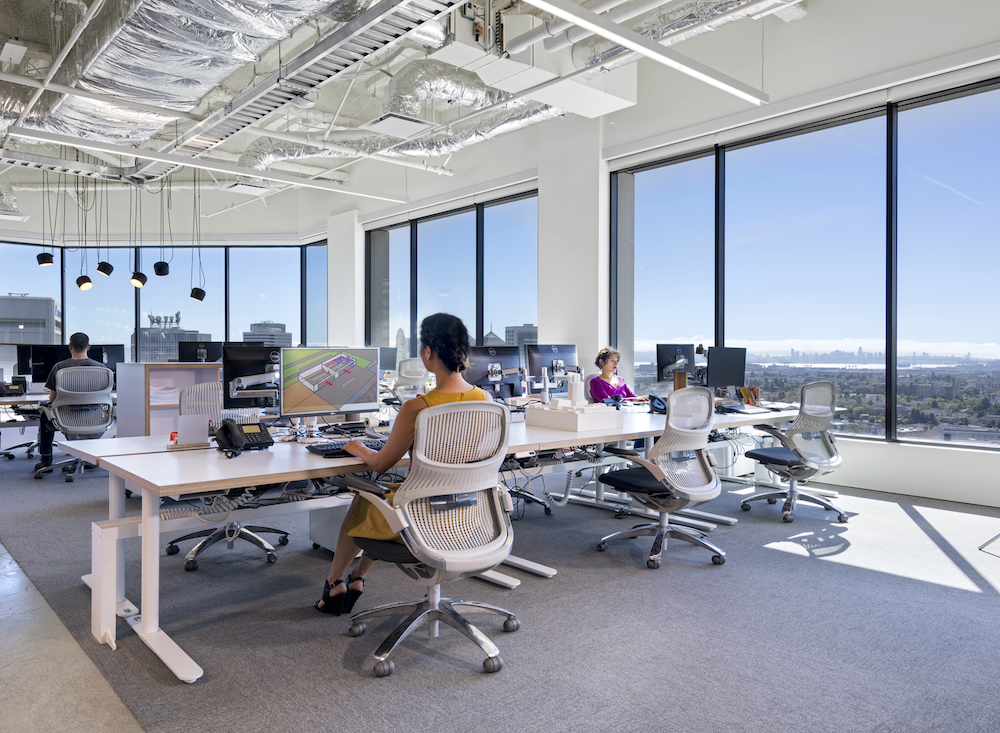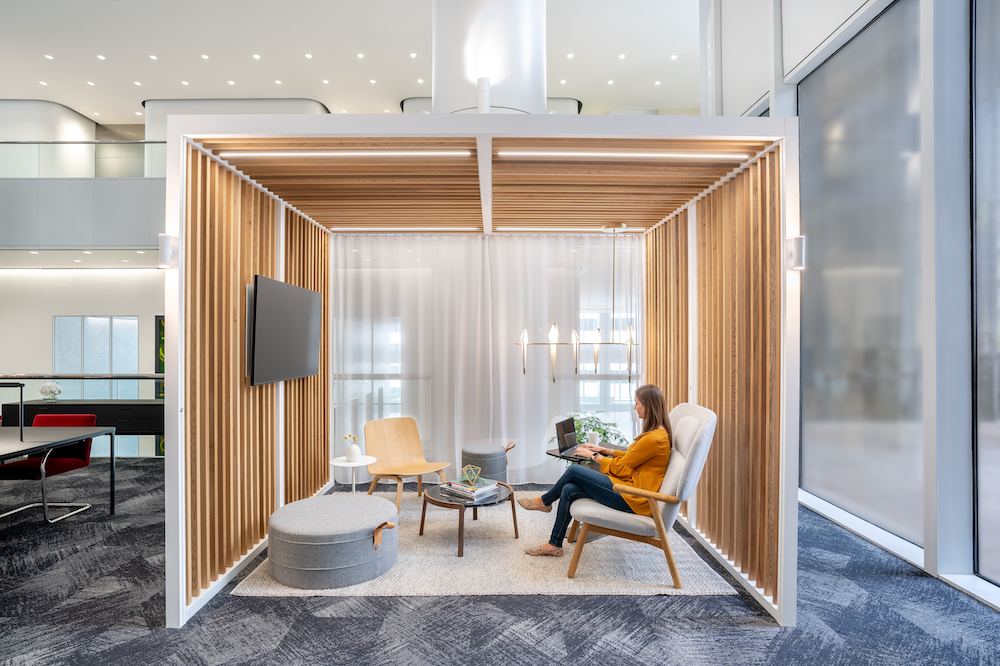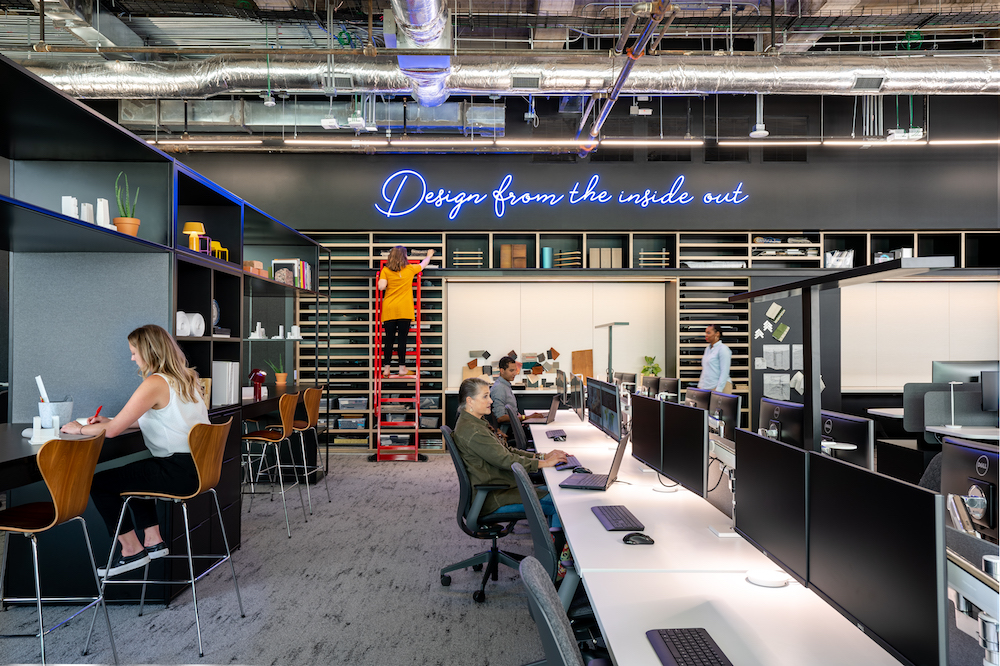Gensler’s Nena Martin believes one of the most important lessons from our time at home is learning to focus on our wellbeing and wellness.

Our worldwide work from home experiment has revealed some benefits, (no commute, more time with family), and challenges (makeshift home offices, video call fatigue). With the school year is in full swing, designers who are also parents have one more strain on their time—helping children with virtual or hybrid schooling. As a result, many of us have likely neglected our own wellbeing and wellness. A recent survey by the Institute for Employment Studies found 20 percent of respondents admit to drinking more, a third say they are eating less healthy and 60 percent of those surveyed are exercising less. They also report more problems sleeping, working longer hours, as well as increased feelings of loneliness.
However, the good news is that we have learned a great deal from our time at home. One of the most important lessons is to focus on our wellbeing and wellness. The question now is how do we create effective working environments at home, new design approaches for the workplace, and cultivate employer support that addresses both wellbeing (fulfillment and prosperity), and wellness (feeling healthy in both body and mind)?
The Changes Ahead
There is a lot of speculation about what the new workplace will look like once we emerge from our home offices. Where your office is located, how much square footage it has, how many people will be working in the space, for example. There are many factors to contemplate in this equation and every office is different.
As we return to the office, one thing seems certain based on Gensler’s work-from-home study and that is we will be working within a hybrid model, which means a few days in the office and a few at home each week. These will be the beginning steps to our new normal. But just how much person-to-person interaction we will have and our ability to collaborate as creative people is still being defined.
So even if your employer is planning for a return to the office, know that working from home will be part of that strategy and you need to be prepared to take care of yourself.

Getting Employers Involved
A company’s most important asset is its people and today, employers risk losing their best people to companies who get it. As employers improve the remote work environment, they will be augmenting their competitive advantage in hiring and retaining the best talent in their field.
What employers should know:
- Cramped conditions are common. Employees face serious challenges with creating equitable home office spaces. Young workers who live in apartments have limited room for a dedicated workspace. Families with young children might not have a spare bedroom to convert to an office. Couples, where both spouses are working from home, are putting strains on their internet connection, square footage, and productivity.
- No two are alike. There’s a huge difference in the satisfaction employees get from working from home based on their age and phase of life. Baby boomers are enjoying remote working. In contrast, Generation Z is struggling to balance home life with young children or feelings of isolation. These employees may require other types of resources and support.
- Risks of isolation. People who live alone are having a hard time finding safe ways to interact right now. A survey of 900 people conducted by Hinge Health found in addition to rising levels of anxiety and depression, many are also experiencing physical problems like back and joint pain. All these factors negatively affect their ability to produce great work.

Here are some practical ways employers can support their remote teams:
- Ask how you can help. Not all home offices are created equal. Talk to your staff about the resources they need to be successful while working remote.
- Be mindful of each person’s situation. Don’t tell employees to enjoy this time at home, because they may not feel that way. Other employers are focusing on the cost savings from not commuting or not having to wear business attire. Doing so may only reinforce the challenges people have in trying to work successfully in a crowded home environment.
- Bring people together. Find ways to encourage social interaction, whether its socially-distant meetings in a park, a virtual 5k, or connecting with the team on social media. Everyone needs human interaction — especially today.
- Don’t forget about managers. Employers look to managers to set the tone for a team. But in today’s environment, consider offering new resources or trainings to help managers balance their workloads and establish a positive working environment for their teams.
- Offer examples. Only 12 percent of the workforce wants to work from home full time, according to Gensler’s Work from Home survey. As an employer, you have vast experience in creating effective workplaces. Share that expertise with your staff and offer suggestions for how they can improve their home office.
- Provide financial support. Consider an employee stipend for office supplies, a good internet connection or equipment. For example, many tech companies are reimbursing employee purchases for work-from-home gear.

Managing Your Mental Health and Wellbeing
Most of us will be working from home for months to come and therefore, it’s critical to prioritize your health and wellbeing. It’s easy to feel as though there isn’t enough time in the day, but when you do, you might be surprised at how this investment pays dividends in your productivity and feeling grounded.
Here are some ways to focus on wellbeing and mental health from the World Health Organization’s Healthy at Home campaign:
- Get up and go to bed at similar times every day.
- Keep up with personal hygiene.
- Eat healthy meals at regular times.
- Exercise regularly.
- Allocate time for working and time for resting.
- Make time for doing things you enjoy.
Pick one change per week. As you build upon your wellness routine each week, you’ll progressively see the value that these activities bring to your workday and your home life.
Pay it Forward
As designers, we guide, inspire, and build functional spaces. Let us think about ways we can help our clients create better connections and more meaningful engagements with their employees. Ultimately, you will be building stronger relationships, while assisting others, as we navigate these unchartered waters together.

